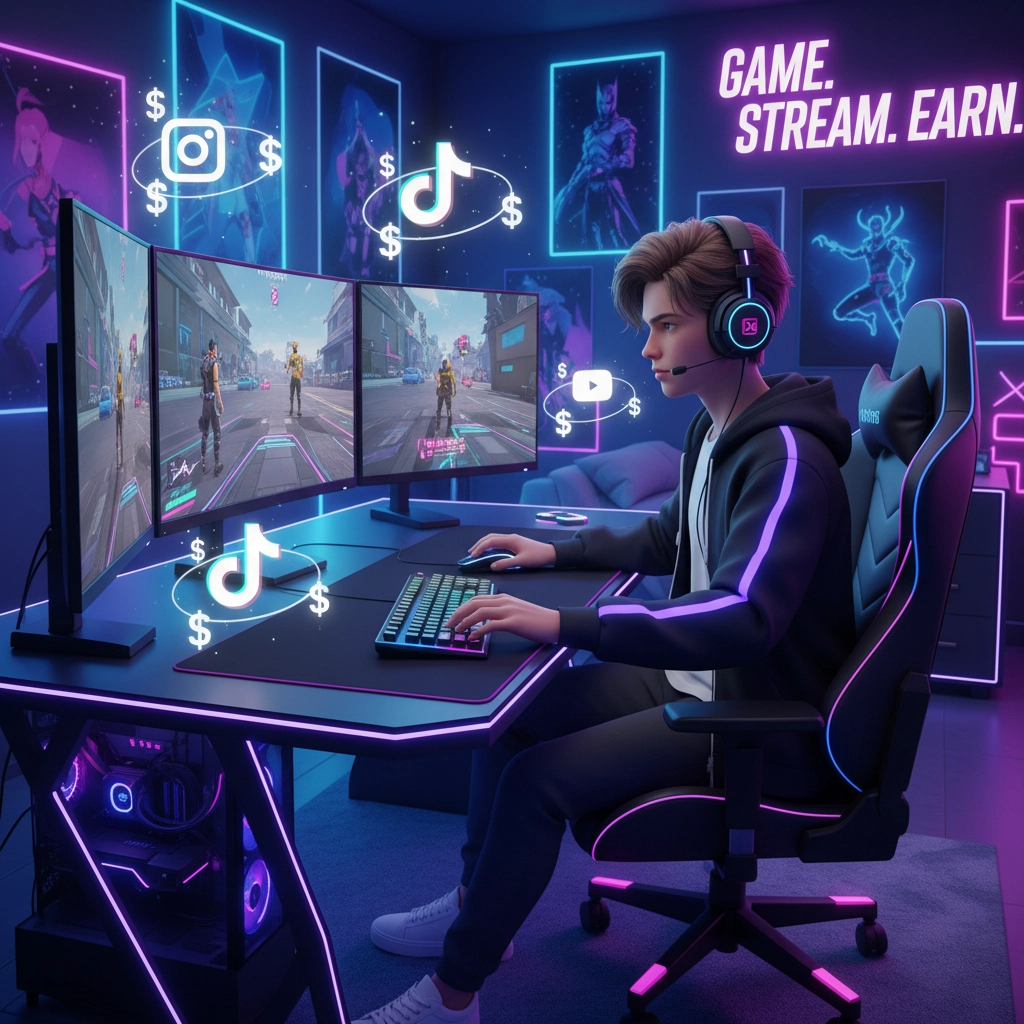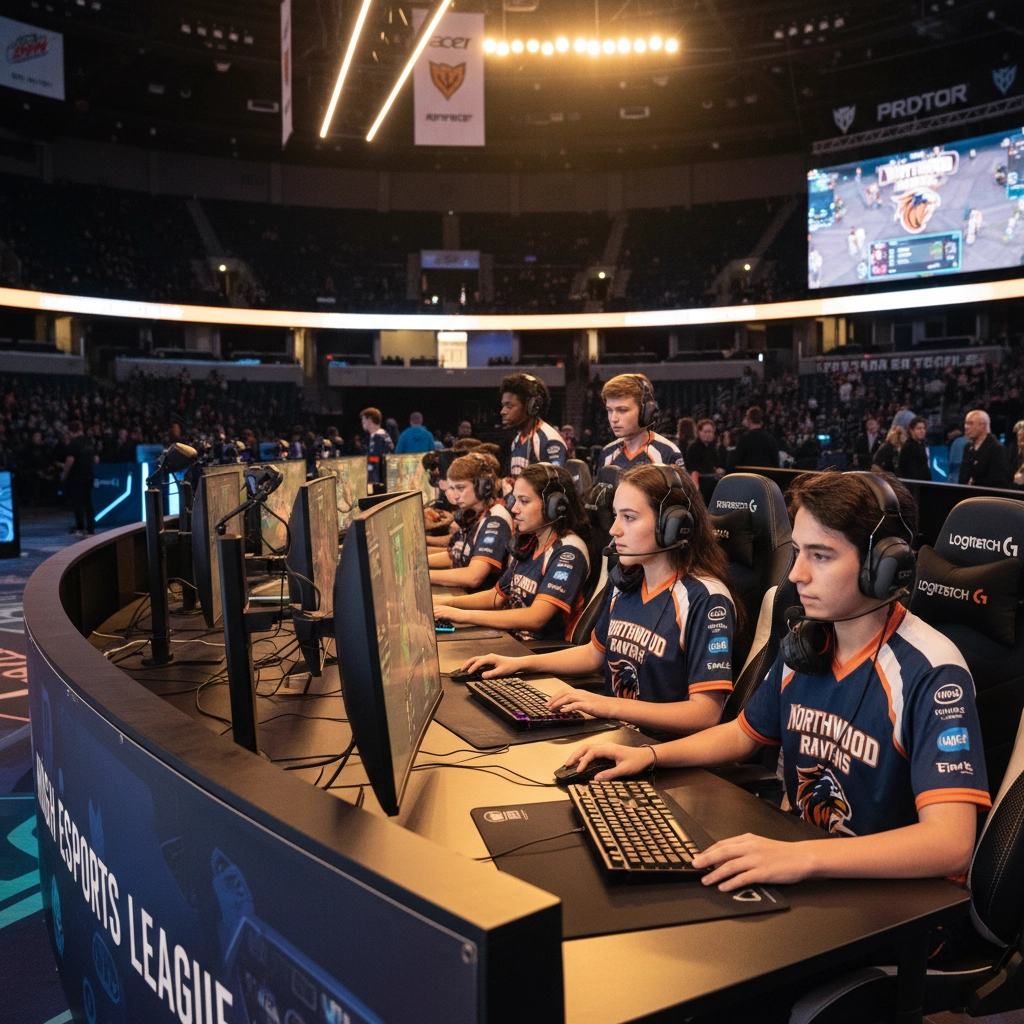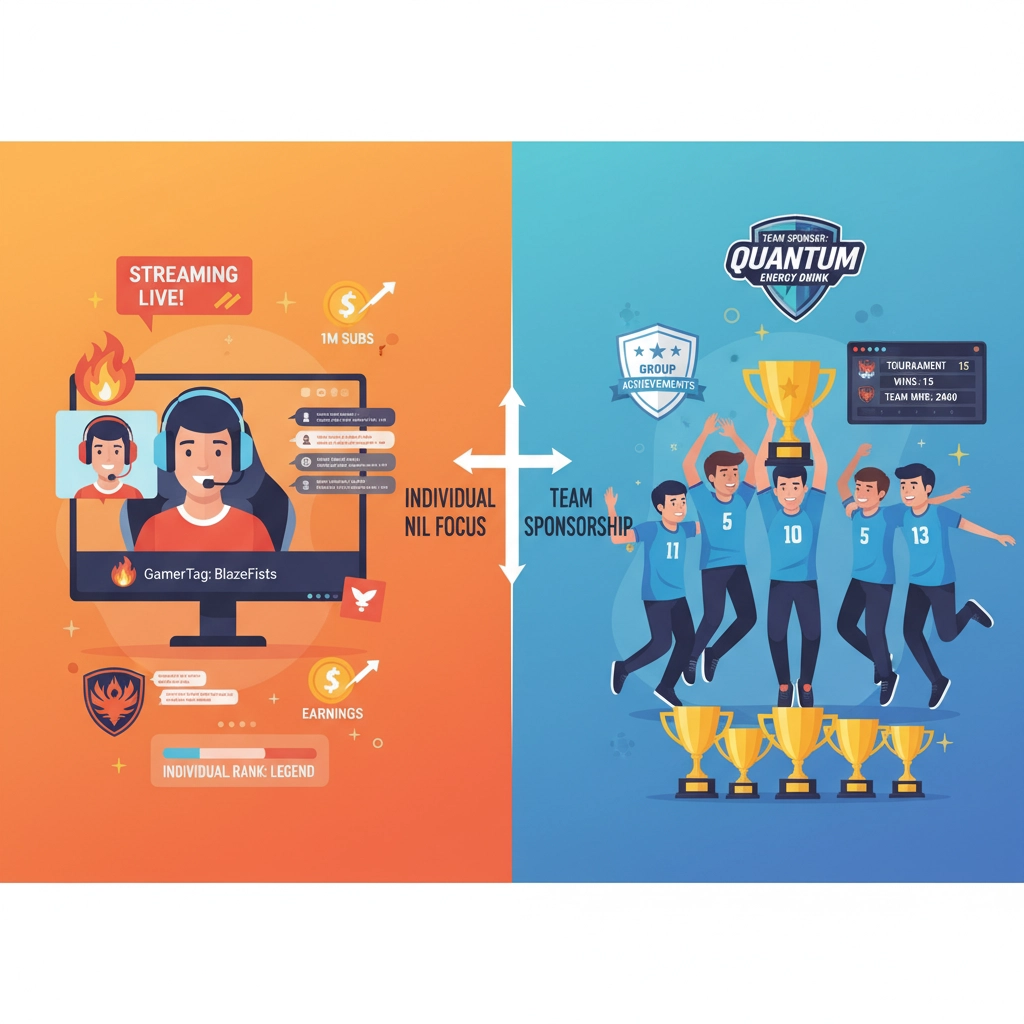High school esports athletes now access two distinct monetization pathways: Name, Image, and Likeness (NIL) deals and traditional brand sponsorships. These approaches serve different purposes and offer varying benefits for young competitive gamers seeking financial opportunities.
Understanding NIL in High School Esports
NIL represents a legal framework permitting athletes to profit from their personal brand through endorsements, content creation, and licensing agreements. This system allows high school esports players to monetize their gaming skills, social media presence, and personal following directly.
NIL opportunities for high school esports athletes include endorsement deals with gaming equipment manufacturers, social media promotions on platforms like TikTok and Instagram, appearance fees for gaming events or tournaments, licensing agreements for name and image usage, and content creation partnerships with streaming platforms.

The flexibility of NIL benefits esports athletes who maintain active online presences. Athletes with established followings can secure partnerships with local businesses, national gaming brands, and technology companies. However, high school athletes must navigate state-specific regulations that vary significantly across jurisdictions.
Some states impose earnings restrictions. Illinois limits high school NIL earnings to $75, while other states permit unrestricted deals. Athletes must ensure compliance with school policies and athletic organization rules to maintain eligibility status.
Building a personal brand requires showcasing gaming skills, personality traits, and community involvement across social media platforms. This process attracts potential sponsors and creates monetization opportunities. The barrier to entry remains lower than many assume, as local businesses and regional gaming companies often seek partnerships with emerging talent.
Traditional Brand Sponsorships Explained
Brand sponsorships in high school esports function as structured partnerships where companies sponsor teams, tournaments, or athletic programs rather than individual athletes. These arrangements focus on team visibility, event association, and access to gaming communities.
High school esports sponsorships require significantly lower investment compared to college sports partnerships. Industry data indicates these sponsorships typically cost 60-70% less than college-level agreements while providing meaningful brand exposure to target demographics.

Traditional sponsorships offer brands different value propositions including team visibility during competitions, association with gaming events, and access to dedicated gaming communities. For athletes, sponsorships often come through team partnerships where organizations negotiate on behalf of players rather than individual agreements.
These arrangements commonly include branded gaming equipment, tournament entry fees, team facility improvements, and transportation support for competitions. However, traditional sponsorships generally provide less individual earning potential compared to NIL deals, as compensation flows through organizational channels.
Individual athletes typically receive indirect benefits such as free equipment, training resources, or facility access rather than direct monetary compensation. The organizational structure limits individual athlete control over sponsorship terms and conditions.
Comparative Analysis
| Aspect | NIL Deals | Brand Sponsorships |
|---|---|---|
| Compensation Model | Direct athlete payment | Organizational payment |
| Individual Control | High athlete autonomy | Limited athlete input |
| Earning Potential | Variable based on following | Lower individual returns |
| Entry Requirements | Personal brand development | Team participation |
| Time Investment | Content creation demands | Minimal individual effort |
| Legal Complexity | State law compliance required | Simplified agreements |
| Revenue Sources | Multiple individual streams | Team-based benefits |
| Brand Development | Personal brand focus | Team brand emphasis |
| Partnership Flexibility | Multiple deal capability | Organizational restrictions |
| Compliance Requirements | Individual verification needed | Pre-approved arrangements |
Strategic Considerations for Athletes
Athletes seeking maximum individual earnings should prioritize NIL development. This model allows direct monetization of personal brand, audience engagement, and content creation abilities. Esports athletes naturally possess advantages in this area through streaming presence and social media engagement.
Athletes prioritizing financial security and operational simplicity benefit from team-level brand sponsorships. These require minimal personal marketing effort while providing guaranteed support through established organizational partnerships, though individual earning potential remains limited.

A balanced approach involves pursuing both opportunities simultaneously. Team sponsorships provide baseline support and operational stability, while individual NIL deals enable additional earning potential as personal brands develop. This dual strategy maximizes total revenue opportunities.
Athletes in states with restrictive NIL regulations must understand local requirements before pursuing deals. Some jurisdictions impose earning caps or specific procedural requirements. In these cases, focus on personal brand development for future college-level opportunities or regulatory changes.
Younger esports players without significant followings should begin with local business partnerships and consistent content creation to build online presence, then transition to larger brand deals as audiences grow. This staged approach provides realistic progression toward major sponsorship opportunities.
Implementation Guidelines
NIL deal pursuit requires establishing clear social media presence across gaming platforms, documenting gaming achievements and tournament performances, creating consistent content showcasing personality and skills, researching state-specific NIL regulations and school policies, and developing media kits highlighting audience demographics and engagement metrics.
Brand sponsorship opportunities involve participating in organized team activities, maintaining good academic standing and behavior standards, supporting team promotional activities and community events, and following organizational guidelines for sponsor interactions and brand representation.
Both pathways require understanding compliance requirements, maintaining academic eligibility, documenting all agreements and payments properly, and consulting with parents, coaches, or advisors before signing contracts or agreements.
Market Dynamics and Opportunities
The high school esports sponsorship market continues expanding as brands recognize the value of engaging younger gaming demographics. Traditional sports sponsors increasingly allocate budgets toward esports initiatives, creating new opportunities for high school programs and individual athletes.
NIL legislation continues evolving at state levels, with some jurisdictions expanding opportunities while others maintain restrictive policies. Athletes and families should monitor regulatory changes that may impact earning potential and compliance requirements.
The integration of education-focused initiatives, such as simulation-based learning programs, creates additional sponsorship categories beyond traditional gaming equipment and tournament support. These developments provide new revenue streams for both individual athletes and team programs.
Technology companies, educational software providers, and simulation platform developers represent emerging sponsor categories specifically interested in high school esports partnerships. These relationships often focus on educational outcomes alongside competitive performance.
Future Considerations
The distinction between NIL and traditional sponsorships may blur as the market matures and regulatory frameworks stabilize. Hybrid models combining individual athlete rights with team-based benefits may emerge as standard practice.
Educational institutions increasingly recognize esports programs as legitimate athletic activities, potentially expanding scholarship opportunities and institutional support. This development may influence both NIL policies and traditional sponsorship structures.
The growth of high school esports leagues and standardized competition formats will likely attract larger sponsors seeking consistent brand exposure across multiple markets and demographic segments.
Athletes entering high school esports today should consider both immediate opportunities and long-term career development when choosing between NIL and sponsorship pathways. The decisions made at the high school level often influence college-level opportunities and professional gaming career prospects.
Understanding these fundamental differences between NIL deals and brand sponsorships enables informed decision-making for high school esports athletes and their families. Each pathway offers distinct advantages depending on individual goals, circumstances, and local regulatory environments.
